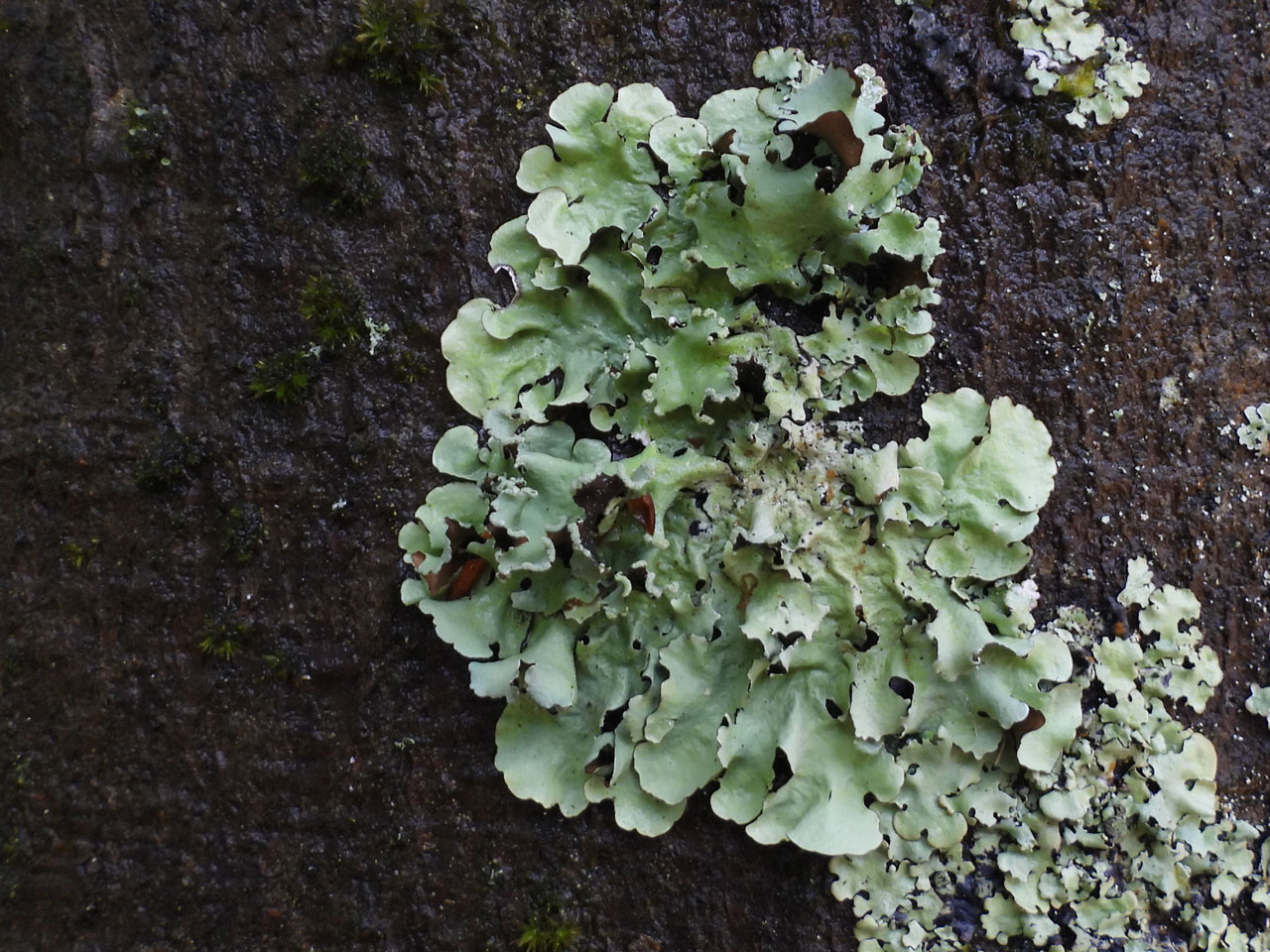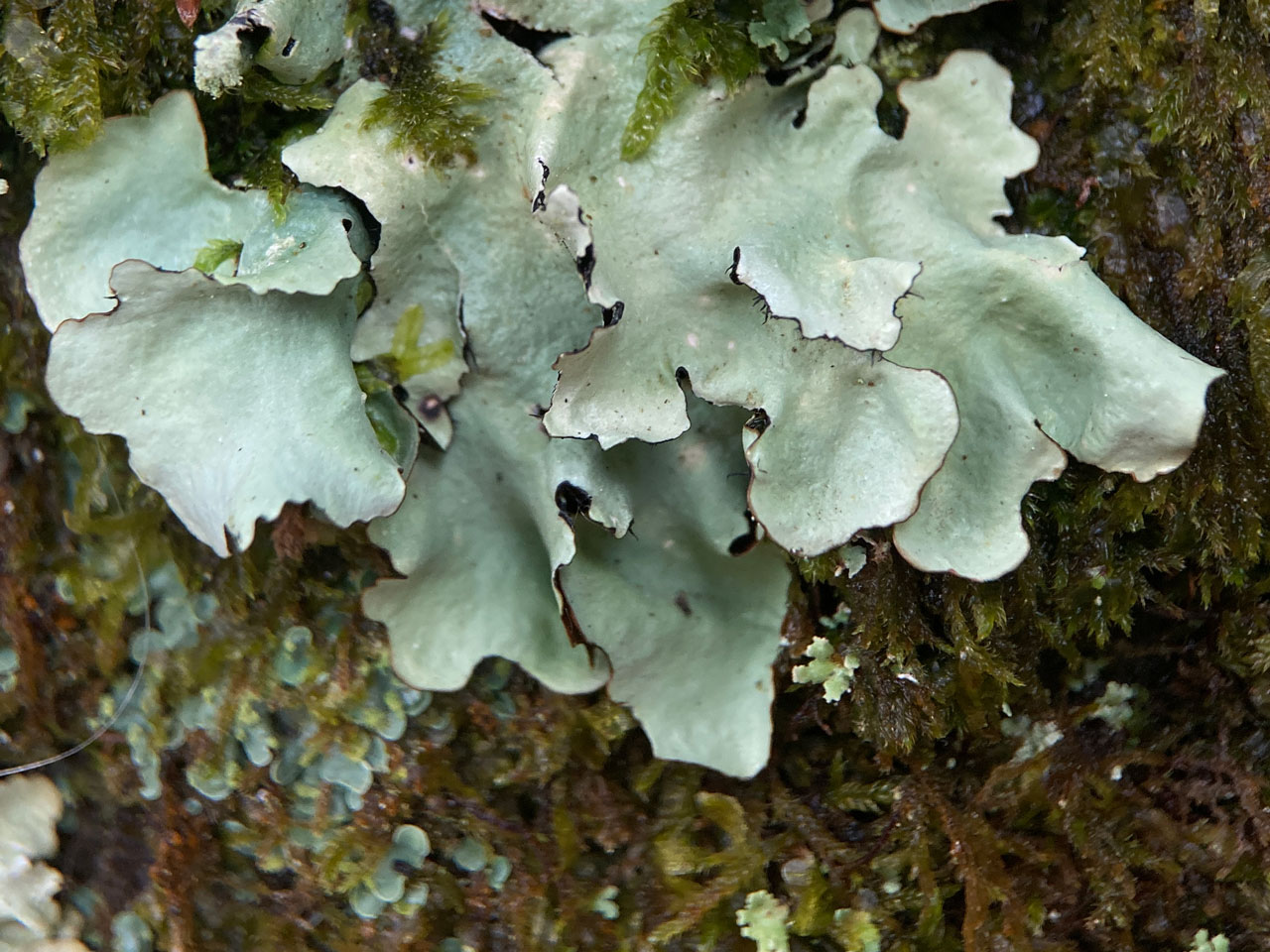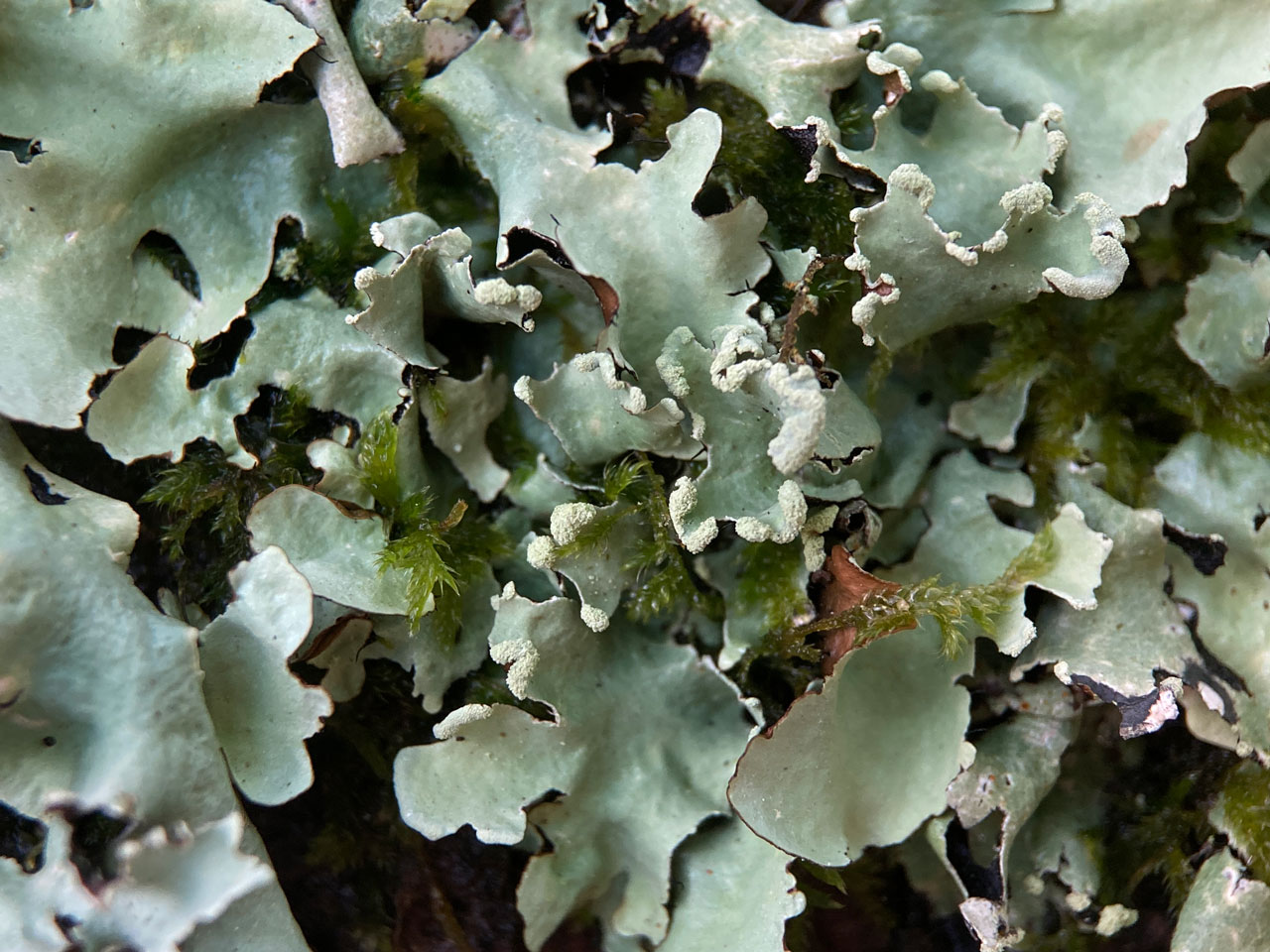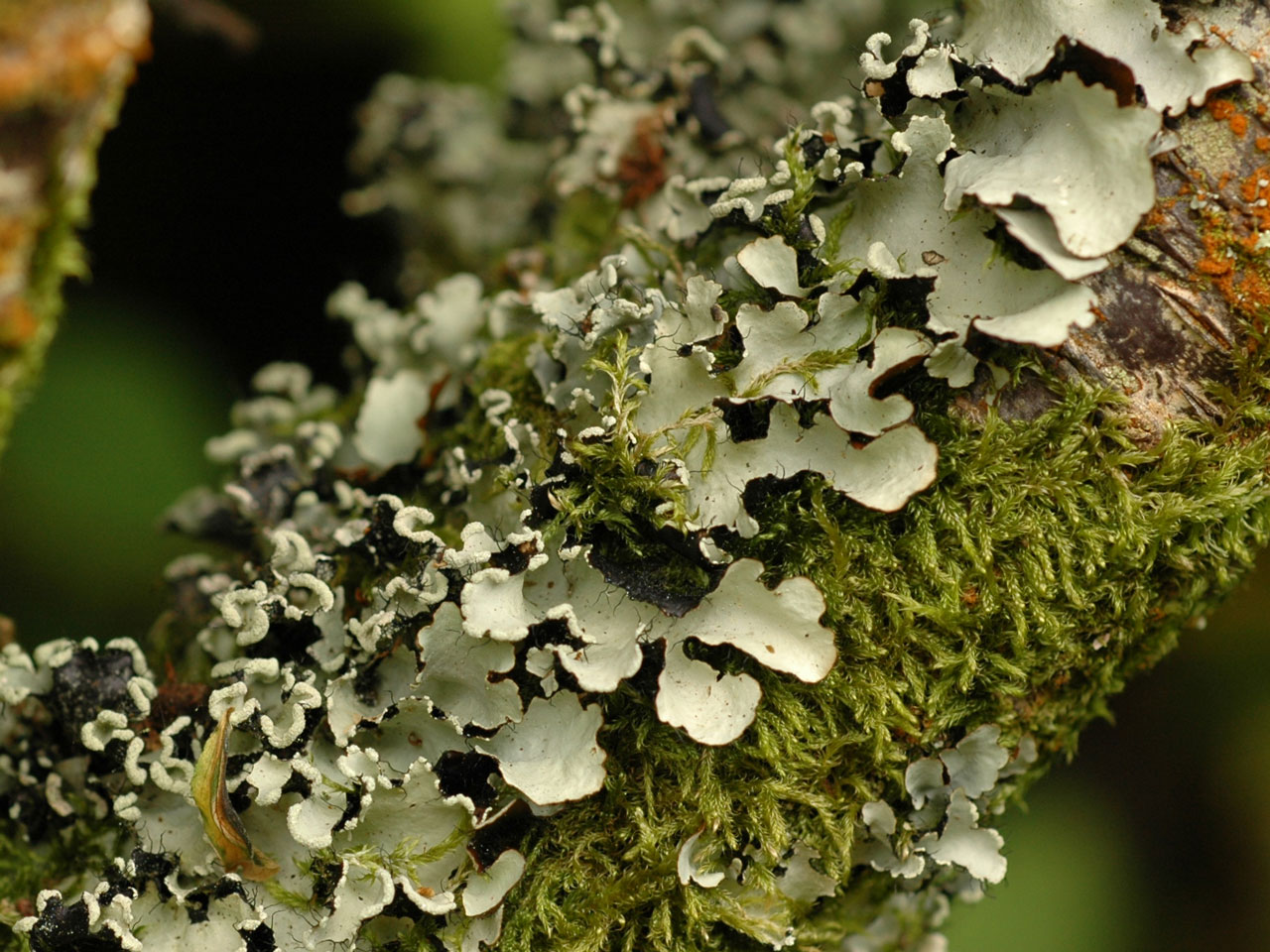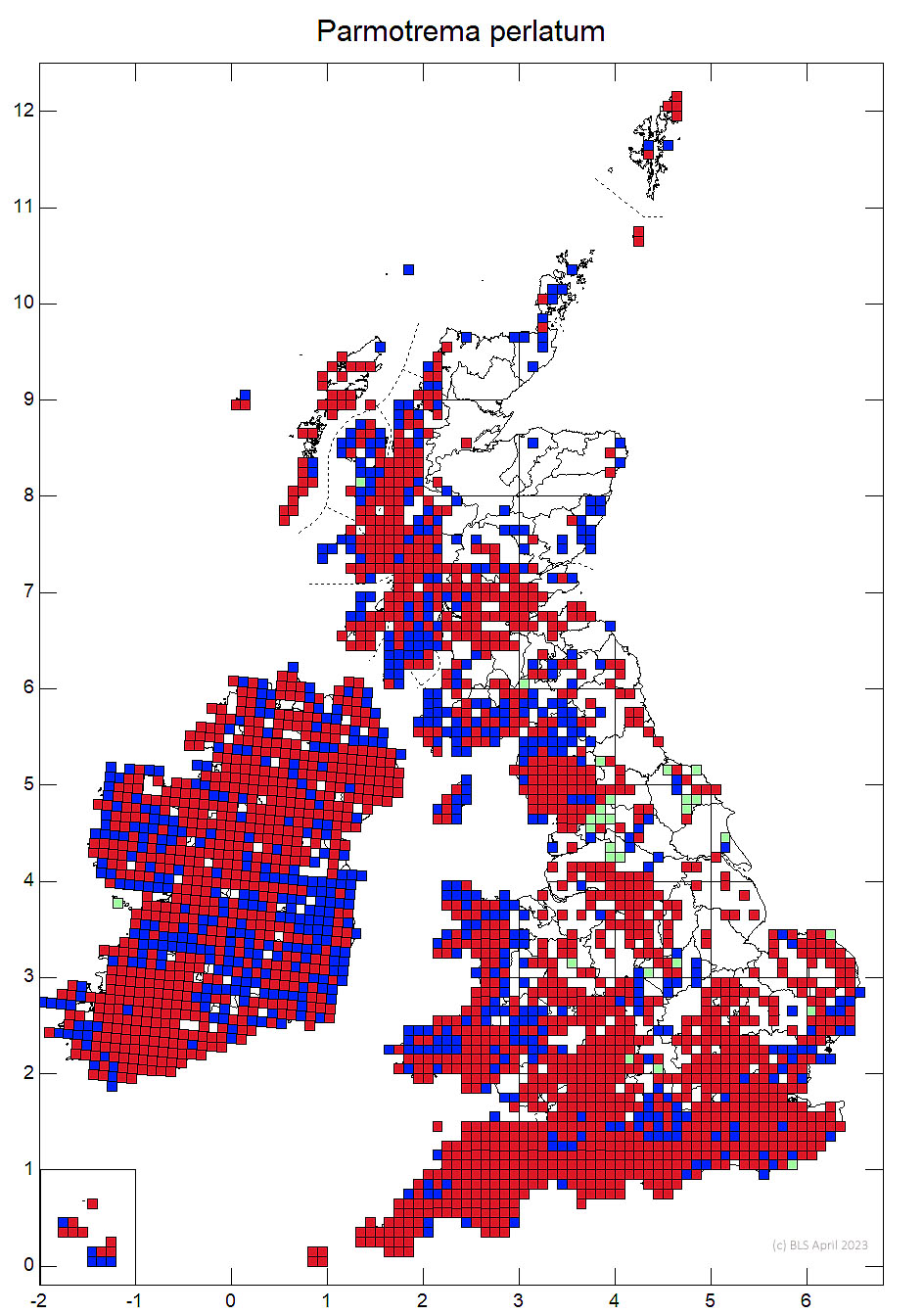Parmotrema perlatum
Parmelia coniocarpa
Parmelia perlata
A very common large leafy sliver-grey lichen, with broad, quite rounded and overlapping lobes, with marginal cilia and linear marginal soralia of fine soredia on the margins of mature lobes. Best separated from other sorediate, marginally ciliate Parmotrema species by the the K+ yellow medulla. Widespread in the south and west well lit neutral habitats on bark, rocks and sometimes on the ground. Also recolonising formerly polluted and acidified regions in the south east, but naturally absent from northern sub-oceanic areas in Scotland.
Like P. arnoldii but with lobes more closely attached and more distinctly wrinkled centrally, with narrower (3– 8 mm broad) and shorter, occasionally forked marginal cilia (1–2 mm long); soralia linear and marginal or sometimes submarginal, causing lobe margins to roll back and appear labriform; soredia fine, rarely spreading laminally as globose clusters. Apothecia rare; thalline margin uneven and partially sorediate. Ascospores 21–28 × 13–15 (–18) μm. Pycnidia scattered, submarginal; conidia not seen. Cortex K+ yellow; medulla C–, K+ yellow, KC+ yellow-orange, Pd+ yellow-orange, UV– or sometimes UV+ ice blue [atranorin, stictic (major), constictic acids (minor) and a range of accessory compounds such as menegazziaic acid].
Separated from the other sorediate, marginally ciliate species (P. robustum and P. arnoldii), by the K+ yellow medulla (stictic acid complex). Platismatia glauca lacks marginal cilia and has a different chemistry. Parmotrema reticulatum and Parmotrema pseudoreticulatum are readily distinguished from P. perlatum by the fine mosaic of hair-line cracks on the upper surface, the soredia at tips of incised lobe margins and by the K+ yellow→ orange medulla (salazinic acid).
Common on well-lit neutral to somewhat acid-barked broad-leaved trees, also frequently on siliceous rocks and walls, coastal rocks, short coastal turf and shingle beaches.

West and S. British Isles, spreading into E. & C. England and there recolonising with improving air quality.
Cannon, P., Divakar, P., Yahr, R., Aptroot, A., Clerc, P., Coppins, B., Fryday, A., Sanderson, N. & Simkin, J. (2023). Lecanorales: Parmeliaceae, including the genera Alectoria, Allantoparmelia, Arctoparmelia, Brodoa, Bryoria, Cetraria, Cetrariella, Cetrelia, Cornicularia, Evernia, Flavocetraria, Flavoparmelia, Hypogymnia, Hypotrachyna, Imshaugia, Melanelia, Melanelixia, Melanohalea, Menegazzia, Montanelia, Nesolechia, Parmelia, Parmelina, Parmeliopsis, Parmotrema, Platismatia, Pleurosticta, Protoparmelia, Pseudephebe, Pseudevernia, Punctelia, Raesaenenia, Tuckermannopsis, Usnea, Vulpicida and Xanthoparmelia. Revisions of British and Irish Lichens 33: 1-98.
Text by N A Sanderson, based on Cannon et al (2023).
